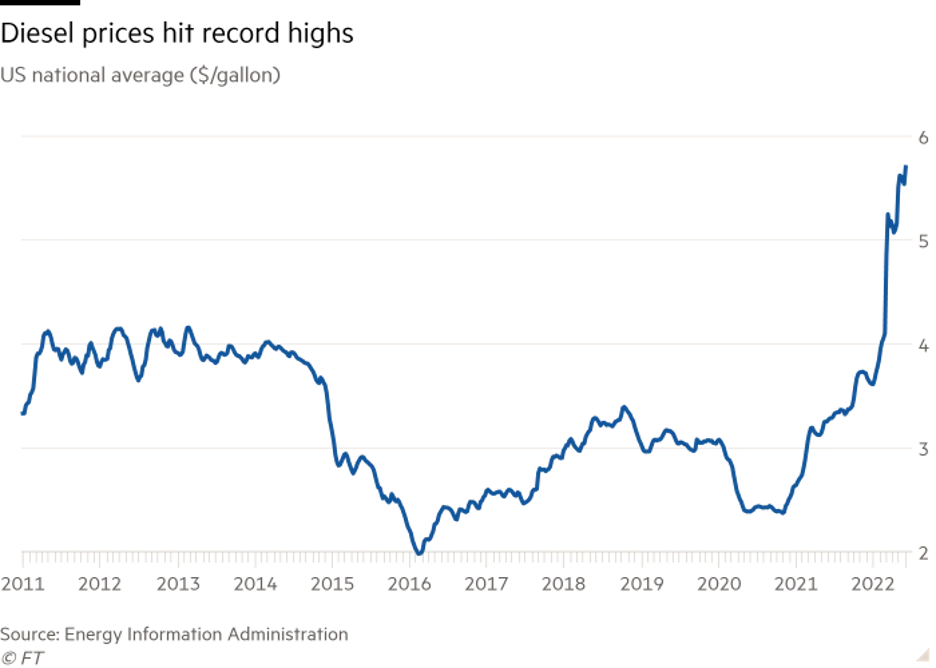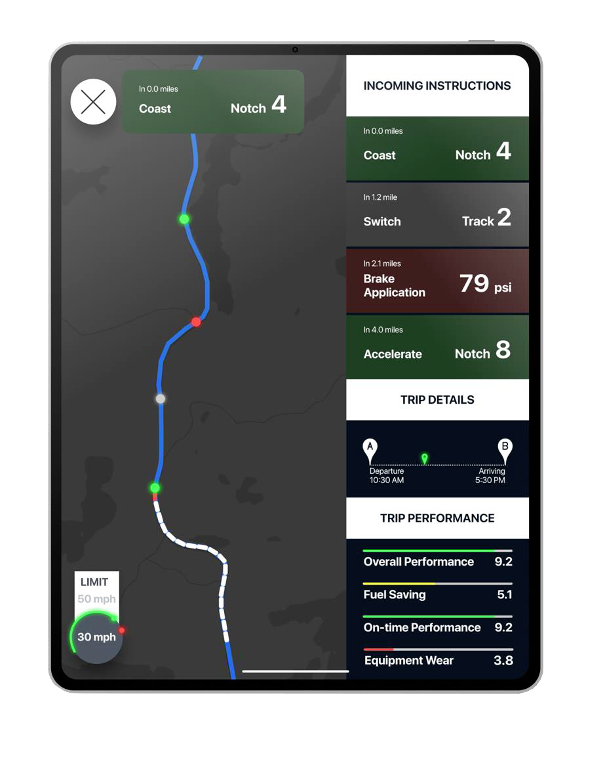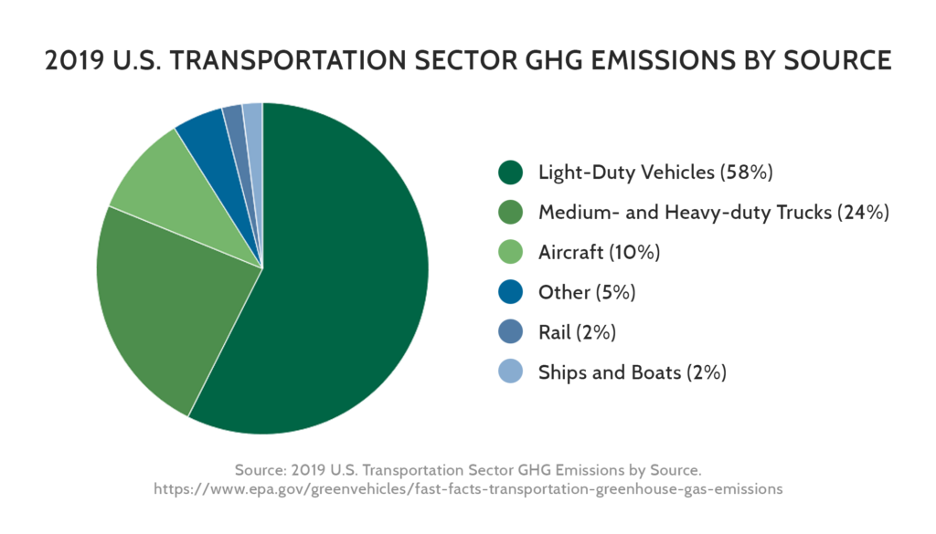Powering the Rail Industry into a New Era of Efficiency: Our Investment in RailVision Analytics
Blackhorn Ventures is excited to announce our latest investment in rail efficiency platform RailVision Analytics, with participation from Trucks Venture Capital, MUUS Climate Partners, Incite.org, and Measured Ventures, and returning investors Active Impact Investments and Neil Murdoch.
The rail industry is the backbone of the global supply chain. Easily overlooked, it is responsible for moving the majority of the world’s raw and finished materials. According to the Association of American Railroads, in a typical year, US freight railroads move around 1.7 billion tons across nearly 160,000-miles of track – and the physics of steel on steel vs. rubber on asphalt mean that rail will always be more efficient than air, road or sea transport.
While COVID exposed the Achilles heel of global supply chains, new climate realities and domestic supply chain reorganization are demanding a more advanced rail system. However, innovation in the rail industry has been underfunded for decades, in favor of cost-cutting. Meanwhile as domestic manufacturing ramps up and manufacturers demand more reliable and timely service from railroads, rail remains by far the most efficient and environmentally friendly mode of transportation.

Source: JustMeans.com
Two-thirds of the global rail market still relies on diesel fuel for propulsion, versus electricity, (which tends to be the fuel of choice in China and the EU). The most recent study, from 2o12, suggests that freight rail electrification in the US could cost $4.8M per mile, which is prohibitively expensive. In 2021, the US transport sector consumed approximately 47 billion gallons of diesel fuel, an average of 128 million gallons per day, according to the EIA. Unfortunately, diesel fuel will be with us for a while. While railways consume 9X less energy per tonne-kilometer traveled than trucks, they have yet to benefit from the digital revolution that has drastically improved our planes and cars, let alone the cloud-native and API centric architecture that is driving enterprise efficiency. The penetration of next gen GE Wabtec diesel electric locomotives today is minimal: less than 5% of all locomotives running in North America are diesel electric. Our rail infrastructure still consumes billions of gallons of diesel fuel each year, generating millions of tons of greenhouse gas emissions and cancer-causing particulates, especially around urban rail corridors.

Digital advancements are needed to improve railway operations and enable cost-savings and emissions-reductions within the industry.
While the railroad industry is open to innovations that will drive efficiencies (including locomotives powered by batteries or hydrogen), tools typically used by the sector to address the issue of high fuel costs are limited and require complicated integrations. Low rates of digitization across commuter, passenger, freight and switching systems means that rail operators and agencies have limited visibility into where fuel efficiency gains are to be found. The rail industry’s second biggest expense is fuel (after labor) at $60B annually. Innovation in the rail industry must be durable, high value-add, and user friendly. And it must be broadly adopted by rail industry management and labor; The Association of American Railroads estimates that a national rail shutdown (which Congress is actively trying to avert) would cost the U.S. at least $2B per day and could cripple energy delivery with risks for grid reliability.
RailVision substantially reduces a rail provider’s carbon emissions and fuel costs
RailVision was launched in 2020 with the objective of mitigating skyrocketing fuel prices by lowering consumption, reducing emissions, improving crew safety, monitoring operational compliance, and reducing wear on equipment for the $100B North American rail industry. RailVision’s flagship EcoRail platform is a lightweight app used on a crew tablet. RailVision’s platform integrates data sources already on locomotives (including passenger data and scheduling, equipment monitoring systems, fuel consumption data, event recorder data, crew reports, GPS mapping, and wayside inspection devices) to create an intuitive tablet-based app. The app securely collects and sends existing rail data to RailVision’s cloud platform. Then, the company’s machine learning algorithms analyze and translate that data into simple suggestions for braking, throttle, and other train-handling operations — all of which provide concrete ways to reduce fuel consumption, decrease CO2 emissions, and improve safety. Crews and supervisors are then able to use RailVision’s dashboard to monitor their savings and performance.
RailVision’s flagship solution, EcoRail, enables real-time fuel-saving recommendations

Source: RailVision Analytics company materials
The rail industry is just beginning its digital revolution and its contribution to sustainable transportation
The transportation sector makes up 27% of US greenhouse gas emissions due to the burning of fossil fuels – the most of any sector.[1] While rail emissions are dwarfed by emissions from passenger vehicles or heavy duty trucks, railroad operators have recently faced increased pressure and incentive to reduce emissions and increase investments in digitalization. We believe that there is a huge opportunity for this sector to accelerate its path towards efficiency, and gain market share as the low-carbon option for freight. Rail can reduce heavy congestion and pressure on public roads, GHG emissions, and the likelihood of traffic accidents (according to NHTSA there were 5,601 fatalities involving at least one large truck in 2021.) In early demonstrations with Canadian customers, EcoRail delivered meaningful fuel cost savings of 10 – 15% and in turn lowered GHG emissions.

RailVision’s team: domain expertise, engineering DNA, and deep enterprise sales know-how.
RailVision is led by CEO and Founder Dev Jain, a mechanical engineer and former member of the Canadian Armed Forces with 5+ years of rail experience. RailVision’s CTO, Mark Smith, has 35+ years of team building and product experience and was formerly a VP of Technology at Virtusa. Dennis McDonald is RailVision’s VP of Sales and brings 10+ years of enterprise software sales at IBM, Oracle and Infor. Dennis also founded the rail association’s fuel efficiency conference 20 years ago. The broader team of 15 has experience across CN, Siemens and Urbint. The team has already demonstrated early traction and has been in pilot testing with several companies, including Genesee & Wyoming, Metrolinx, Port of Montreal, and Via Rail. The app is now commercially available for deployment by all passenger and freight shortline railroads. We’re excited to partner with this stellar team as they build digital infrastructure to power the future of rail transportation efficiency.